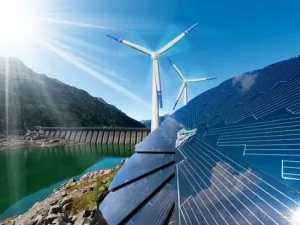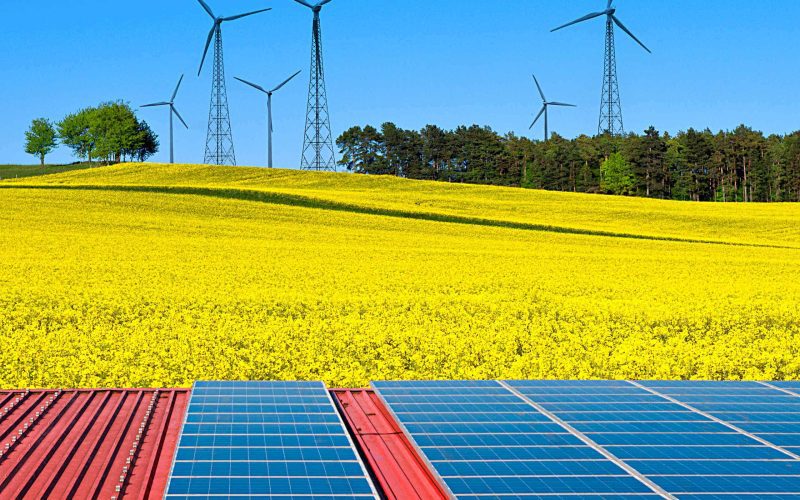Federal incentives have been a fundamental driving force behind the advancements in the US Renewable Energy Policy. These incentives come in various forms, such as tax credits, grants, and loan guarantees, all designed to make renewable energy projects more financially viable. For example, the Investment Tax Credit (ITC) for solar energy and the Production Tax Credit (PTC) for wind energy have been instrumental in encouraging investment in these sectors. By reducing the initial financial burden on developers and investors, federal incentives have significantly accelerated the deployment of renewable energy technologies across the country.
Subsidies are another crucial element for the implementation of the US Renewable Energy Policy. These financial aids help to level the playing field for renewable energy sources, which often face higher upfront costs compared to traditional fossil fuels. Subsidies can take various forms, including direct financial assistance, favorable loan terms, and research and development funding. By providing these subsidies, the federal government aims to foster innovation, reduce costs, and increase the competitiveness of renewable energy technologies. This financial support is essential for scaling up renewable energy projects and achieving the nation’s long-term sustainability goals.
State-Level Renewable Energy Initiatives

State-level initiatives play a significant role in shaping the US Renewable Energy Policy. States have the flexibility to design and implement their own renewable energy policies, which can complement and enhance federal efforts. For instance, states like California, New York, and Texas have established ambitious renewable energy targets and mandates, such as Renewable Portfolio Standards (RPS), which require a certain percentage of electricity to come from renewable sources. These state-level policies not only drive local renewable energy development but also set examples for other states to follow, creating a ripple effect that influences national policy directions.
State policies are instrumental in supporting new directions in the US Renewable Energy Policy. By implementing innovative programs and incentives, states can address specific regional needs and opportunities. For example, some states offer additional tax credits, rebates, and grants for renewable energy projects, further reducing the financial barriers for developers. Additionally, state-level initiatives often include measures to streamline permitting processes, improve grid integration, and promote community-based renewable energy projects. These efforts help to create a more favorable environment for renewable energy development and support the broader goals of the US Renewable Energy Policy.
Impact of Policy on Solar and Wind Industries
The US Renewable Energy Policy has had a profound impact on the growth of the solar and wind industries. Federal incentives, subsidies, and state-level initiatives have collectively created a supportive ecosystem for these industries to thrive. As a result, the solar and wind sectors have experienced rapid expansion, with significant increases in installed capacity, technological advancements, and cost reductions. The policy framework has attracted substantial private investment, leading to the creation of jobs, economic growth, and a more sustainable energy landscape.
New directions in the US Renewable Energy Policy have also enhanced market stability for the solar and wind industries. By providing long-term policy certainty, such as extended tax credits and clear regulatory frameworks, the government has reduced market volatility and increased investor confidence. This stability is crucial for the planning and execution of large-scale renewable energy projects, which often require significant upfront investment and long development timelines. As a result, the solar and wind industries are better positioned to achieve sustained growth and contribute to the nation’s clean energy transition.
Public-Private Partnerships in Renewable Energy
The US Renewable Energy Policy actively encourages public-private partnerships to advance renewable energy initiatives. These collaborations bring together the strengths of both sectors, leveraging public resources and private expertise to accelerate the deployment of renewable energy technologies. Public-private partnerships can take various forms, including joint research and development projects, co-investment in infrastructure, and collaborative policy development. By fostering these partnerships, the government aims to drive innovation, reduce costs, and overcome barriers to renewable energy adoption.
Public-private partnerships are vital in the implementation of US Renewable Energy Policy initiatives. They enable the pooling of resources, knowledge, and capabilities to tackle complex challenges and achieve common goals. For example, partnerships between government agencies, private companies, and research institutions have led to breakthroughs in renewable energy technologies, such as advanced solar panels, wind turbines, and energy storage systems. These collaborations also help to scale up renewable energy projects, enhance grid integration, and promote the development of supportive infrastructure. Ultimately, public-private partnerships are essential for realizing the full potential of the US Renewable Energy Policy.
Challenges in Implementing Renewable Policies
Implementing renewable energy policies in the US involves balancing economic growth with the goals of the US Renewable Energy Policy. Policymakers must ensure that the transition to renewable energy does not negatively impact economic stability or lead to job losses in traditional energy sectors. This requires careful planning and the development of strategies to support workers and communities affected by the shift to renewable energy. Additionally, policymakers must consider the economic implications of renewable energy policies, such as the potential for increased energy costs and the need for investment in new infrastructure.
Navigating regulatory complexities is another significant challenge in the implementation of the US Renewable Energy Policy. Renewable energy projects often face a complex web of federal, state, and local regulations, which can create barriers to development. Streamlining permitting processes, harmonizing regulations, and reducing bureaucratic hurdles are essential for accelerating renewable energy deployment. Additionally, policymakers must address issues related to grid integration, such as ensuring the reliability and stability of the electricity grid as more renewable energy sources are added. Overcoming these regulatory challenges is crucial for the successful implementation of the US Renewable Energy Policy.
Future Projections for Renewable Energy Growth

The US Renewable Energy Policy is a driving force behind future renewable energy growth. With continued support from federal incentives, subsidies, and state-level initiatives, the renewable energy sector is poised for significant expansion. Projections indicate that renewable energy could account for a substantial share of the nation’s electricity generation in the coming decades. For example, the solar and wind industries are expected to continue their rapid growth, with increasing installed capacity, technological advancements, and cost reductions. The policy framework will play a crucial role in ensuring that this growth is sustainable and aligned with the nation’s climate and energy goals.
New directions in the US Renewable Energy Policy are expected to boost future projections for renewable energy growth. Emerging policy trends, such as the focus on energy storage, grid modernization, and the electrification of transportation, will create new opportunities for renewable energy development. Additionally, the increasing emphasis on decarbonization and the integration of renewable energy into various sectors of the economy will drive demand for clean energy solutions. By providing a supportive policy environment, the US government can ensure that renewable energy continues to grow and contribute to a more sustainable and resilient energy system.
Comparative Analysis with Global Renewable Policies
Comparing the US Renewable Energy Policy with the European Union’s Green Deal reveals both similarities and differences. The EU’s Green Deal is a comprehensive policy framework aimed at achieving climate neutrality by 2050, with a strong emphasis on renewable energy, energy efficiency, and carbon reduction. Like the US, the EU provides various incentives and subsidies to support renewable energy development. However, the EU’s approach is more integrated, with a focus on cross-sectoral policies and regional cooperation. The US Renewable Energy Policy, while ambitious, tends to be more fragmented, with significant variations in state-level initiatives and regulatory frameworks.
The US Renewable Energy Policy also contrasts with China’s Renewable Energy Targets. China has set ambitious targets for renewable energy development, with a focus on becoming a global leader in renewable energy technologies. The Chinese government provides substantial subsidies and incentives for renewable energy projects, and state-owned enterprises play a significant role in the sector. In contrast, the US relies more on market-driven approaches and public-private partnerships to achieve its renewable energy goals. While both countries aim to expand their renewable energy capacity, their policy approaches and implementation strategies differ significantly.
Conclusion:
In conclusion, the US Renewable Energy Policy is shaped by a combination of federal incentives, state-level initiatives, public-private partnerships, and regulatory frameworks. While there are challenges to overcome, the policy framework provides a strong foundation for future renewable energy growth. By learning from global best practices and adapting to emerging trends, the US can continue to advance its renewable energy goals and contribute to a more sustainable and resilient energy system.












